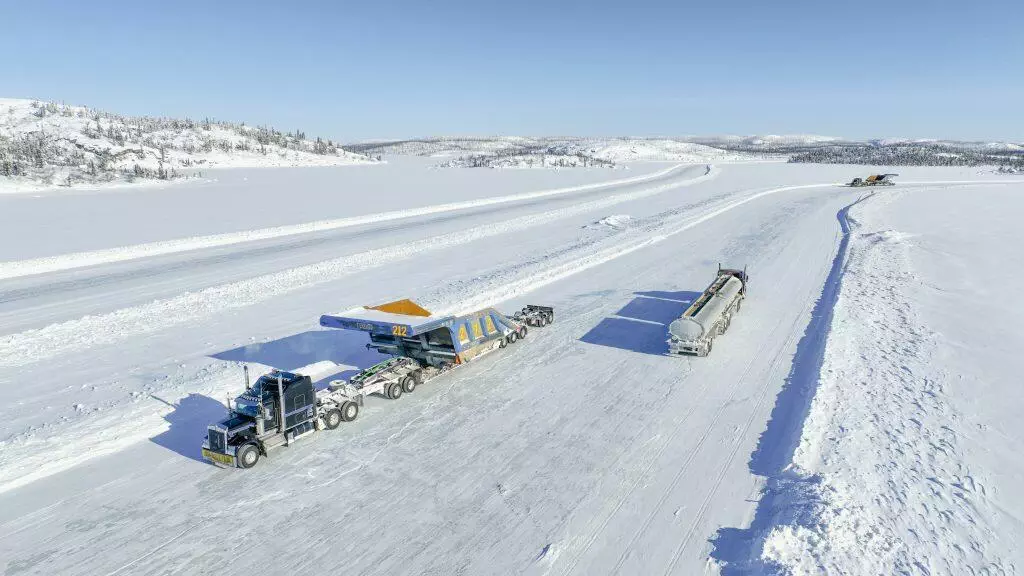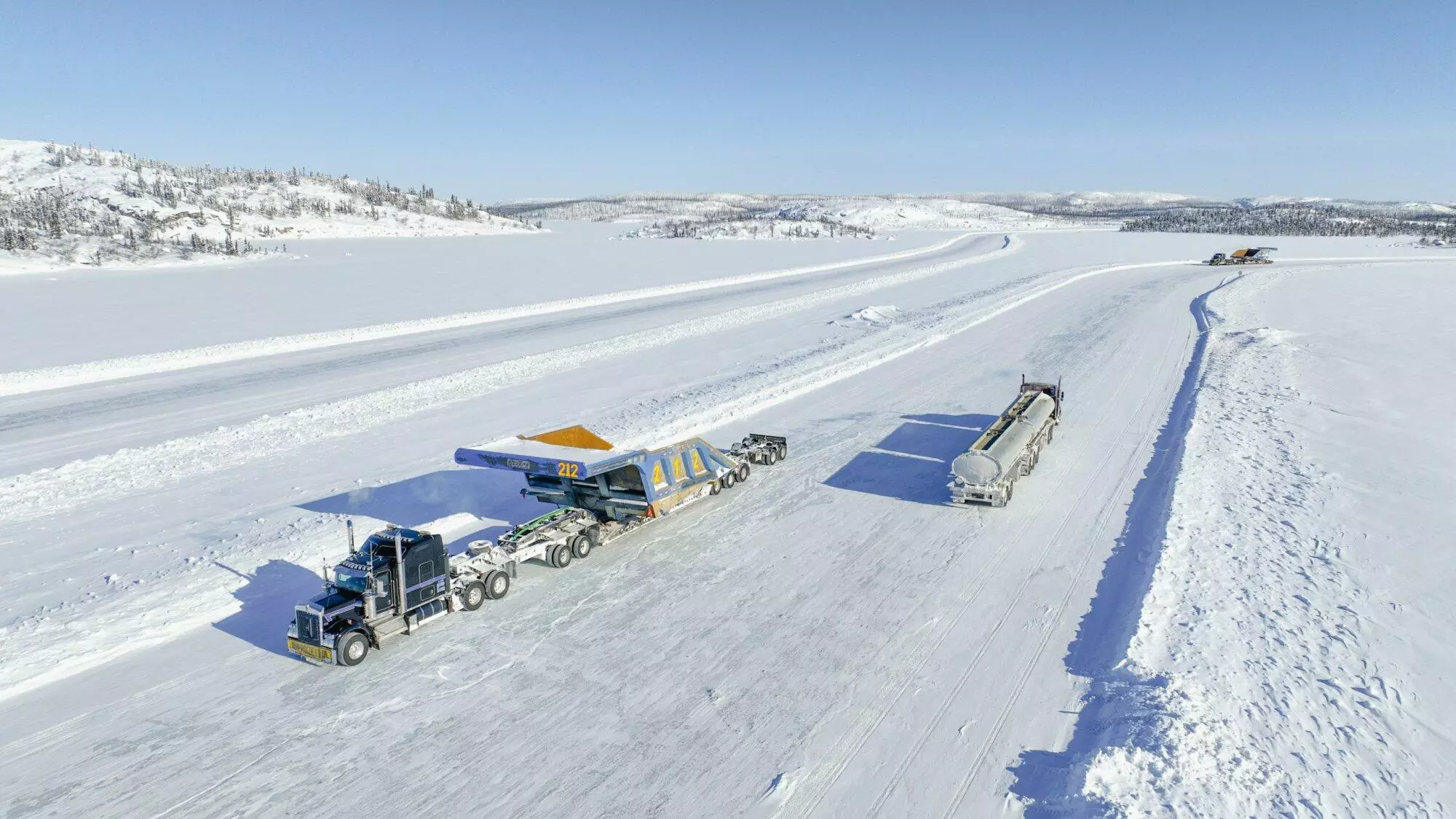
The Winter Road is in a region served by no other highways and is accessible solely by air for 10 months of the year. Currently, the road serves Ekati, Diavik and Gahcho Kué diamond mines and extends 400 kilometres north of Yellowknife.
The winter road was first constructed in 1982 and it’s purpose was to supply the Lupin Gold Mine at Contwoyto Lake in Nunavut.
In 2000, a joint venture (JV) consisting of Ekati and Diavik diamond mines took over the construction and operation of the road. The purpose of the JV was to supply materials for the construction of the two diamond mines.
In 2008, De Beers Group became the third partner in the Winter Road JV Project, with the construction of Snap Lake Diamond Mine, which closed in 2015. De Beers maintains its partnership in the JV, as the operator of Gahcho Kué Diamond Mine. Gahcho Kué also builds a 120 km winter road of its own to connect the mine to the main Tibbitt to Contwoyto Winter Road.
The 2024 winter road season was the 25th anniversary of the JV.
Facts
The Tibbitt to Contwoyto Winter Road (TCWR) begins at Tibbitt Lake, which is the end of the Ingraham Trail (also known as Highway 4).
The winter road travels north and 85 percent of the route is built over frozen lakes, with the remaining 15 percent built over land portages between the lakes.
There are three camps located along the route that accommodate winter road personnel and also function as maintenance facilities for road-users. The camps are located at Dome Lake, Lockhart Lake, and Lac De Gras.
With much of the winter road constructed over ice, the road must be rebuilt each year. Construction normally starts in mid-December with a planned opening date of February 1. This timeline can vary dependent upon weather conditions prevailing during the construction phase.

Construction crews start by removing the snow cover on the ice where the winter road will travel. Once the snow is removed, the thickness of the ice is measured or profiled, by using ground penetrating radar. This machine is towed behind a vehicle. This profile provides data and shows the winter road builders where flooding is required to build the ice thickness that is necessary to accommodate heavy loads of freight.
- The winter road is approximately 50 metres (160 feet) wide on ice and 12 to 15 metres (25 to 45 feet) wide on portages.
- The portages are snow-packed and flooded to build a minimum of 10 cm (four inches) of ice on the surface.
- Before the winter road officially opens, it must reach a minimum of 74 cm (29 inches) of ice.
- As the ice thickness increases, the load capacity for freight increases.
- When a minimum of 100 cm (39 inches) is reached, the road is open to full load capacity.
- The winter road builders monitor and maintain the road to ensure that it meets all requirements for the respective freight loads.
Safety/Security

- Safety is the highest value in managing the winter road.
- Prior to driving the winter road, all drivers and winter road personnel are required to complete and pass the Winter Road JV Project orientation.
- Speed limits on the winter road can vary from 10 km/hour to 60 km/hour depending on load and location. Drivers are dispatched north and south in convoys of four trucks every 20 minutes. Speed limits are closely monitored as they not only impact driver safety but also ice integrity.
- A security team of 19 people patrol the Ingraham Trail and the winter road 24 hours a day while the road is operating.
- The security team works with the drivers to ensure they comply with the winter road rules. The rules are designed with safety in mind and for all road users.
- A Health, Safety & Environment (HSE) team works closely with security, winter road Contractors, and carrier companies and their drivers. The Health, Safety and Environment (HSE) team aids in identifying hazards and develop ways to mitigate any risks that may occur.




